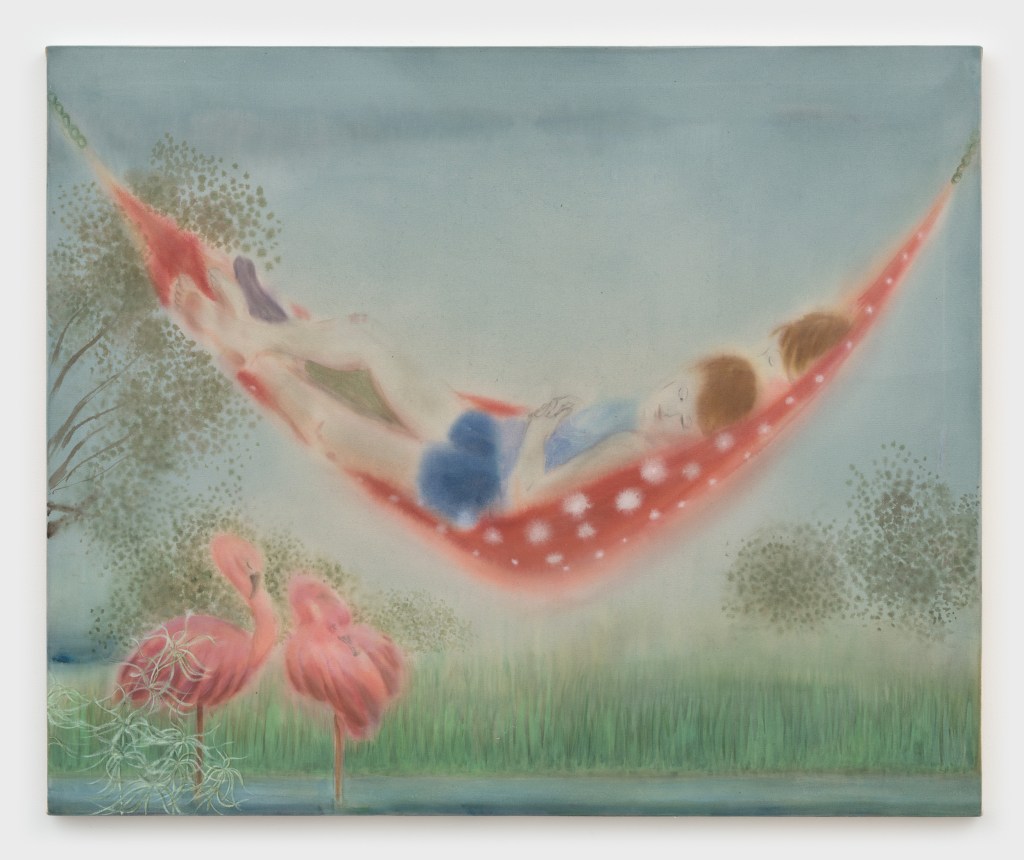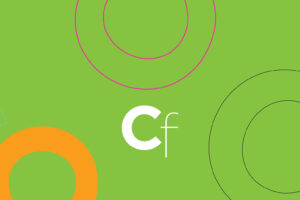Xingzi Gu Shows the Vulnerability of Youth


I first saw Xingzi Gu’s vaporous paintings of adolescents on the brink of adulthood at the artist’s MFA show at New York University. The child of artists living and working in Nanjing, Gu left China to study art in New Zealand after high school before moving to New York for graduate school. Following a successful debut exhibition at Lubov in 2024, their current exhibition, Fluffing the foliage at CLEARING, features five diaphanous paintings (all 2025), each depicting two androgynous individuals engaged in everyday activities such as napping in a hammock, standing on a balcony, or riding a bicycle together.
Gu’s application of dry pale layers of oil and acrylic soaked into the canvas parallels the painting style of Chinese watercolors. The use of this technique to render images of androgynous adolescents evokes a world that shares something with the Japanese-German painter and ceramicist Leiko Ikemura, whose work is currently on view at Lisson Gallery in New York. What these artists have in common is a strong interest in that moment when the individual has not yet had to surrender their fantasy life in order to enter the adult world. In this regard, their work is about resisting that compromise, and the need to be productive and conformist that accompanies it.

At the same time, the figures’ sense of vulnerability and feelings of being cut-off are palpable. This might be because Gu, who was born in 1995, lived through the isolating years of the pandemic during their mid 20s, when many people spend a lot of time socializing. By pairing the figures, but not ever depicting them in intimate moments, Gu reminds this viewer of the different ways people found ways to spend time together while remaining conscious of the threat of COVID-19.
None of the pairs in the paintings make eye contact. In “Lend me a light” (2025), a figure smoking a cigarette holds a match to the other person’s cigarette. Both focus on the lit match instead of each other. A firefly hovers beneath the awning under which they are standing. It’s in the details — the linear stems and stalks in many of the works, as well as the smudged clusters of leaves on the trees in “Pinwheel” — that we can see the fluidity of Gu’s calligraphic line. The combination of line and stained color reveals an artist working to update China’s artistic legacy on their own terms.

In “Pinwheel,” what looks like two young women ride a single seat bicycle, while a small dog peers over the rim of the basket in the front. The two figures are dressed identically, in what we might read as school uniforms, but they do not appear to be talking or sharing anything. The time period of the painting is not clear, which can suggest the persistence of certain legacies, such as school uniforms. I don’t think Gu is making a comment as much as observing a feature of both Chinese and US society.
Living in the diaspora, and using a traditionally European medium (oil paint) that connects to Chinese watercolors, I sense the figures in Gu’s paintings can be read as surrogates for the artist; they are together but isolated members of a small community in in which being cut-off was a determining feature. These are people who have interior lives and are not always sure which way to go. There is a sadness to these paintings, which might be their truest subject.

Xingzi Gu: Fluffing the Foliage continues at CLEARING gallery (260 Bowery, Nolita, Manhattan) through June 21. The exhibition was organized by the gallery.





